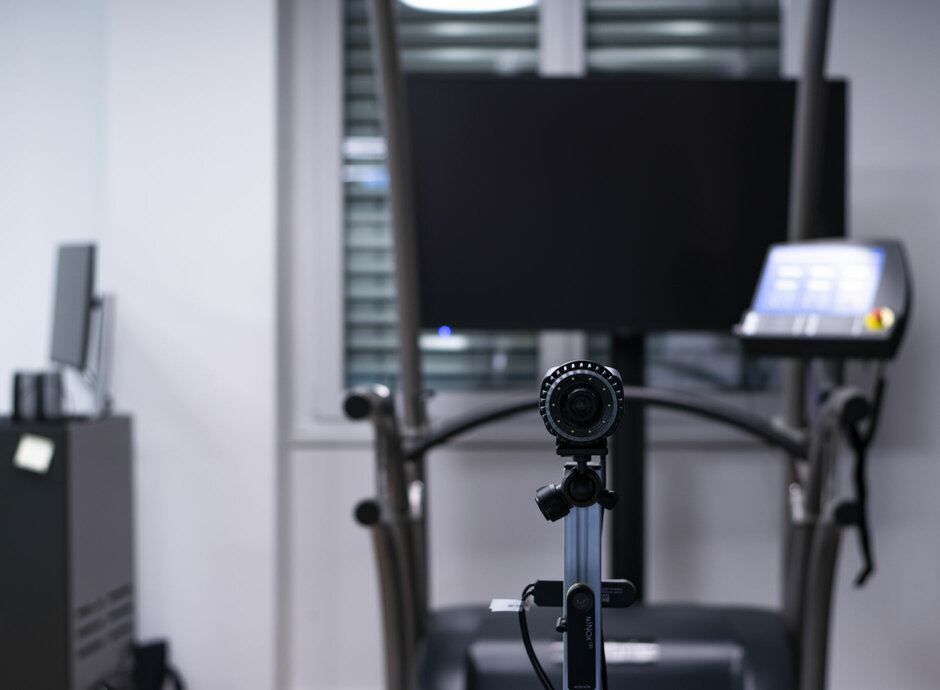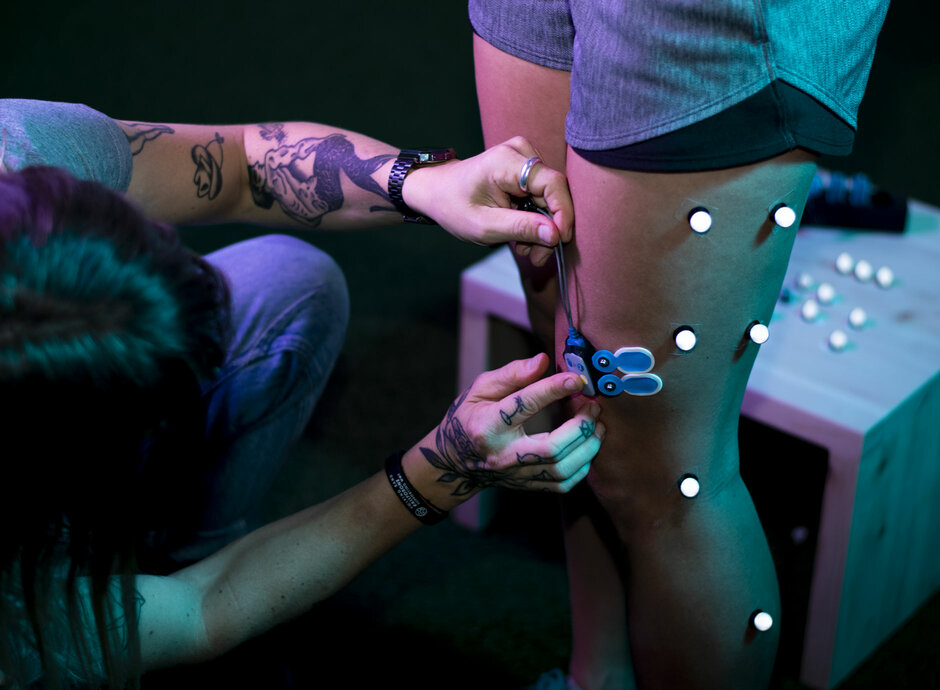We walk thousands of steps every day without giving it much thought. Incorrect loads, pain as well as orthopaedic or neurological problems are very often also evident in gait patterns. Parameters such as walking speed, stride length, stride width or pressure distribution provide a clear picture. If we want to get to the bottom of the causes, we have to consider the movement of the entire person. Depending on the question and complaint, we analyse the movement in different levels and offer different modules:
STATE-OF-THE-ART GAIT ANALYSES
FOR BETTER WALKING
Analysis of joint movement
When analysing joint movement, we focus on hip, knee and ankle joints as well as on the upper body. We look at all levels of motion (inflection - stretching, abduction - adduction, rotation) and determine whether there are any problems such as asymmetries, postures or stretching problems.
Analysis of muscle activation
Every joint movement results from the actions and efforts of the muscles. Therefore, it may also be important to visualise and analyse the activation pattern of specific muscles.
Analysis of joint load
The analysis of the load acting on the joints can also be of great relevance in order to uncover incorrect loads and systematically investigate the causes of them.
Modules of gait analysis
For different questions and problems, we offer different modules of gait analysis. In order to diagnose the severity of the underlying problem, gait analysis modules 1+2 are suitable, and gait analysis modules 3+4+5 are suitable for researching causes. In this way, valuable findings can be gained for prevention, corresponding therapy recommendations (e.g. how much strain do I put on my knee?) or the rehabilitation process.
This basic gait analysis provides information about walking speed, stride length and stride width as well as the temporal phase division of the standing and swing phase. This allows conclusions to be drawn about the so-called limping mechanism, asymmetries and a norm-compliant sequence of steps. Walking Basics 1 is an ideal tool for a quick analysis, e.g. in the context of rehabilitation documentation.
- 30m walk distance
- Recording parameters via Optogait
- Ground reaction force (optional)
2 min. walking without walking aid (e.g. crutches, rollator...)

This second basic module of gait analysis builds on Walking Basics 1 and also provides information about the pressure distribution under the feet in dynamic walking movement, in the touchdown and rolling behaviour of the foot as well as in the gait line of the body's centre of gravity. This analysis deepens the conclusions from Module Walking Basics 1 when it comes to pressure distribution under the foot with regard to foot deformities, pressure points and the like.
- Treadmill
- Pedobarography
- Video documentation
2 min. walking without walking aid (e.g. crutches, rollator...), walking without shoes possible

In addition to the information from Walking Basics 2, the kinematics module of gait analysis provides valuable data material regarding 3D movement of the body in the upper body, pelvis, thigh, lower leg and foot regions. The relevant hip, knee and ankle angle is produced. This study allows us to investigate the causes of changes in walking, determine extensor or flexion deficits, for example in the hip or knee joint, or determine movement dysfunctions, for example in the pelvic area. Kinematics is particularly relevant in patients with artificial hip or knee joints or injuries to the tendon and capsular ligament apparatus of the knee joint. It also provides information on whether your shoe or orthosis care supports you properly when walking.
- Treadmill
- Pedobarography
- IMU sensors (3D)
- Video documentation
2 min. walking without walking aid (e.g. crutches, rollator...)

Here, the focus is on the muscular activation of selected muscles of the lower extremity, i.e. gluteal, thigh and lower leg muscles. The EMG module of gait analysis provides conclusions about muscular control and whether this takes place in the right order and at the right time. In addition to this intermuscular coordination, we also get to the bottom of any question of coordinative muscular imbalances.
- Treadmill
- Pedobarography
- IMU sensors (3D)
- EMG sensors
- Video documentation
2 min. walking without walking aid (e.g. crutches, rollator...)

In addition to kinematic information, this analysis method provides information about load (joint moments) in the hip, knee and ankle joints. This allows conclusions to be drawn about possible incorrect loads in the joints.
- Instrumented gangway
- Force plate
- Marker-based motion capture system (3D)
- Video documentation
2 min. walking without walking aid (e.g. crutches, rollator...)






